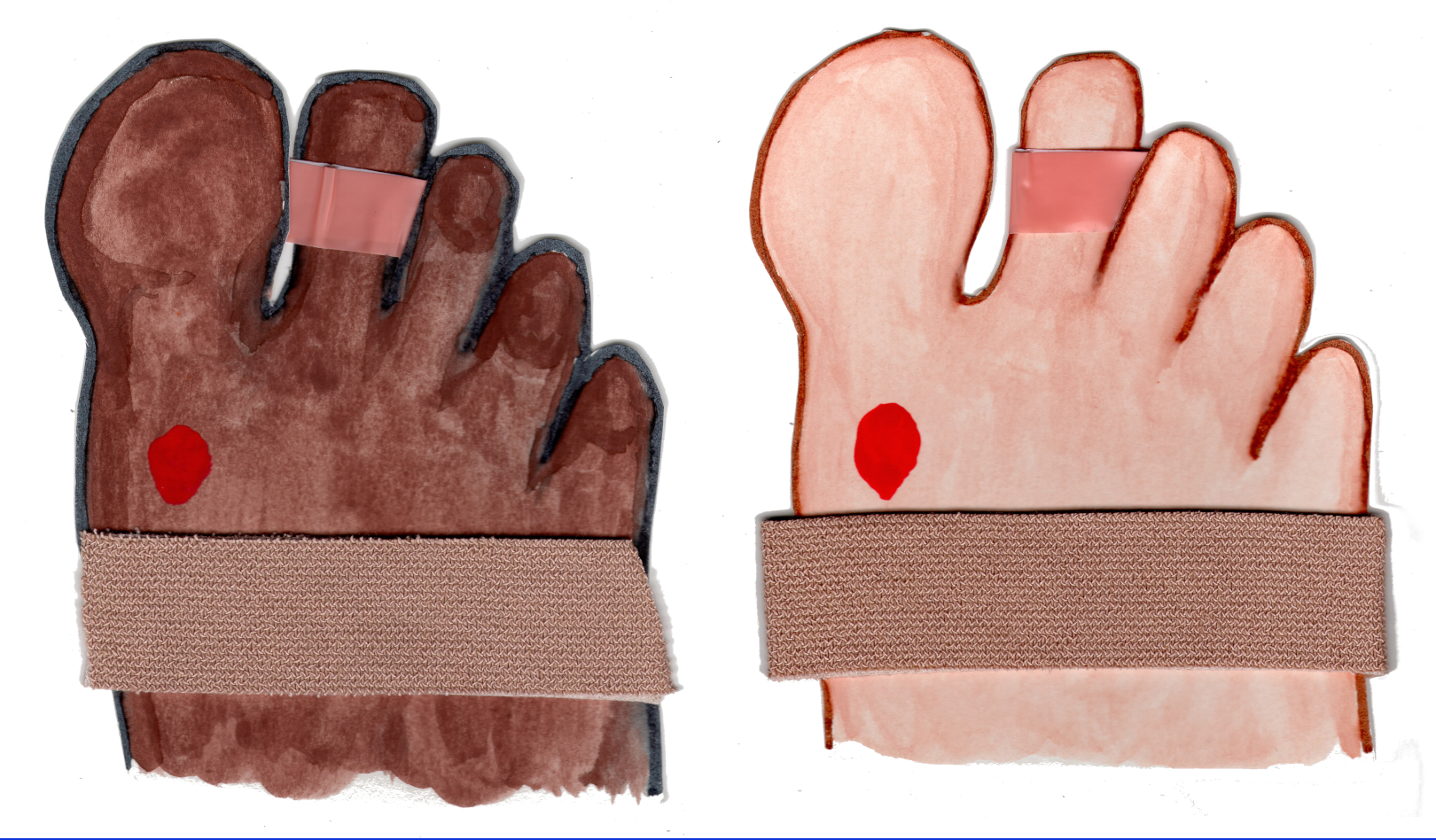Healing Feet, Avoiding Amputation

GitHub page
As an academic vascular surgeon, I work to develop cost-effective, resilient, and equitable strategies to prevent leg amputations. This contains a portfolio of resources I am sharing to help others with similar interests.
Tenets of Treatment for Health Care Providers
Pages providing practical guidance with rationale and evidence. Included here both for routine clinical care, and also with the hope that consistent, evidence-based management might help decrease the racial and ethnic disparities in leg amputation rates in Texas and elsewhere.
- Deep infections get drained/incised.
- Ensure or establish adequate arterial inflow.
- Reconstruct, reestablishing intact epithelium over the entire extremity.
- Maintain mobility – even if amputation is performed.
This is a summary of our current approach and evidence supporting it. An overview of the foot ulcer-limb loss disease process is in our “System of Care” review paper and our “framework” review paper. summarizes clinical outcomes in patients with foot ulcers and peripheral artery disease.
Information for People with Diabetes
These videos are aimed at helping people avoid complications from diabetes- and circulation-related foot problems. They also summarize how foot ulcers are often treated and how to develop a strategy to quit smoking.
Guard your Feet is a ~500 word brochure written to help persons at risk for foot ulcers and amputation with understanding how diabetes can lead to foot ulcers and infections. It helps people reduce their amputation risk, recognize a foot infection, and develop a contingency plan if infection does develop.
This brochure is written with plain language and no undefined technical terms. Feedback from kind patients with foot ulcers was incorporated into the initial English language version. Fantastic colleagues have since helped translate it into 27 additional languages spoken by 98% of the United States population.
- Guard your Feet, English
- Proteja los Pies, Spanish
- Bảo vệ của bạn Đôi chân, Vietnamese
- Chebe ụkwụ gị, Igbo
- Shọ Ẹsẹ Rẹ, Yoruba
- گارڈ آپ پاؤں, Urdu
- حارس ك أقدام, Arabic
- आपके पेरोंकी रक्षा करे, Hindi
- Guarda dos seu Pes, Brazilian Portuguese
- 护理您的脚, Mandarin Chinese
- Uita-te atent la picioarele tale, Romanian
- Protegez Vos Pieds, French
- Chroń swoje stopy, Polish
- 발을 보호 하세요, Korean
- Gad Pye Ou, Haitian Creole
- Ilaali Lugahaad, Somali
- உங்கள் பாதங்களை காத்தக்கொள்ளுங்கள், Tamil
- Bewachen Sie Ihre Füße, German
- ចូរƳរljរ េជង របស់អƒក, Khmer/Cambodian
- Jaga dan selamatkan kaki anda, Indonesian
- あなたの足を守り ましょう, Japanese
- Ayaklarini koru, Turkish
- Берегите ваши Ноги, Russian
- તમારા પગનું રક્ષણ કરો, Gujarati
- Guard Your Feet, Farsi/Persian
- Bantayan ang Mga Paa, Tagalog/Filipino
- Guard Your Feet, Bengali
A Selection of Our Manuscripts Relevant to Clinical Care
- Foot ulcer prevention clearly represents to best opportunity for cost savings: reduced amputation rates + lower cost than current care.
- All patients with large or infected foot ulcers merit objective testing (toe pressures, skin perfusion pressures, or angiogram) to identify peripheral artery disease. This diagram demonstrates the optimal diagnostic strategies for peripheral artery disease identification.
- Leg bypass operations have lower perioperative mortality than leg amputation in patients with advanced comorbidities.
- Providing revascularization and limb salvage efforts appears to be cost-effective for all patients and may even provide cost-savings in elderly, functionally-marginal patients.
- Foot infections in bone (osteomyelitis) with E. coli or Pseudomonas are associated with worse outcomes; infections with methicillin-sensitive Staphylococcus aureus.
For Texans Interested in Addressing the Disparities in Leg Amputation Rates
- This two-page health policy brief, written with the University of Texas Medical Branch’s Center to Eliminate Health Disparities, summarizes the problems caused by leg amputations and suggests some steps forward.
- Significant racial and ethnic disparities persist in Texas, as people categorized as Black and people categorized as Hispanic undergo higher risk-adjusted rates of leg amputations than people categorized as White.
- Geography and lack of nearby specialist care at high-volume centers may contribute to leg amputation rates in many areas of Texas in these areas of Texas.
- See maps demonstrating population-adjusted rates of peripheral artery disease-associated leg amputations within the largest four metropolitan areas in Texas. You can also peruse the interactive Texas state maps showing the annual incidence rate of leg amputations by county, the frequency of leg amputations among persons categorized as Hispanic by county, and the proportion of lower extremity revascularizations done as surgical bypasses (rather than endovascular interventions) by zip code.